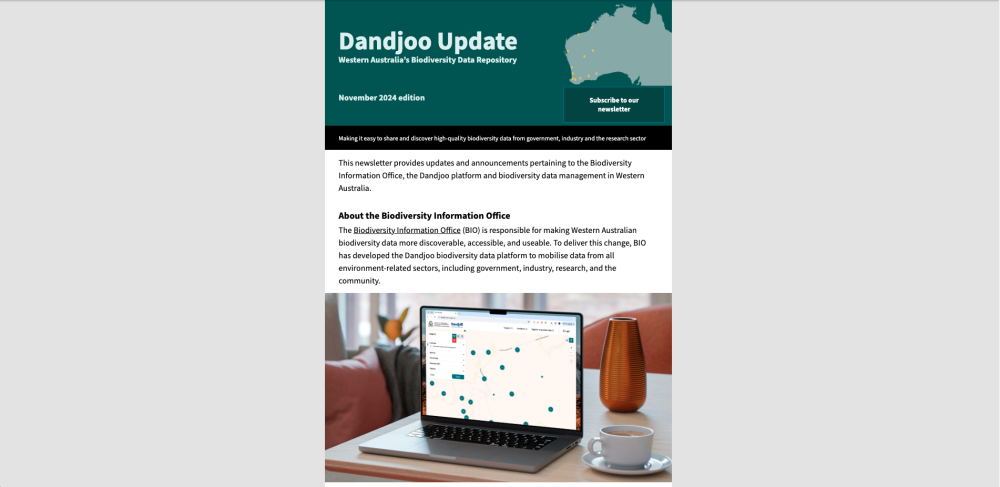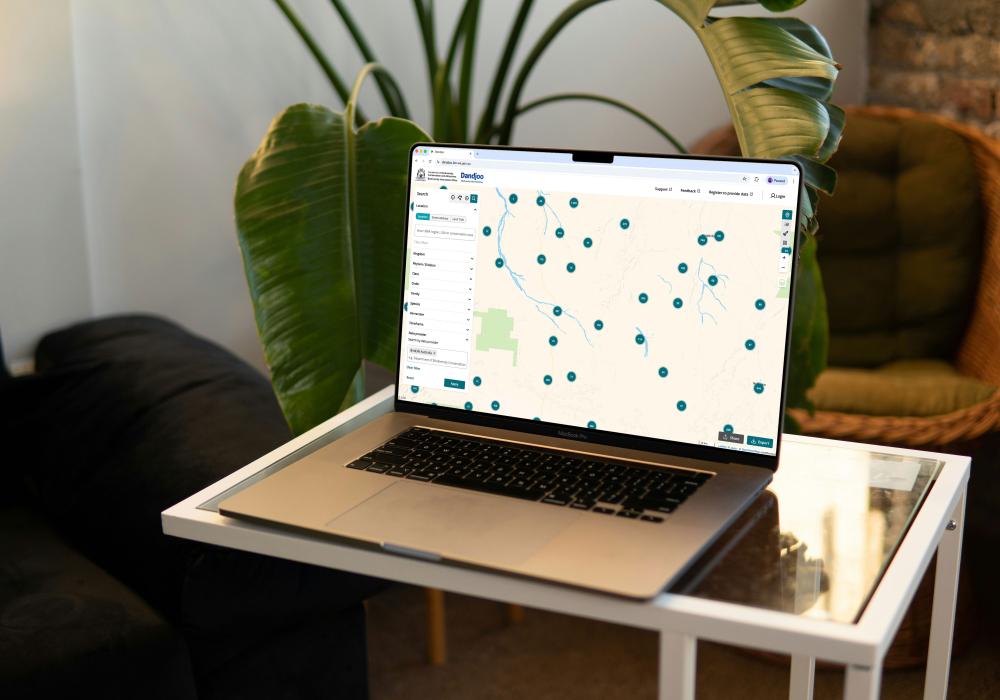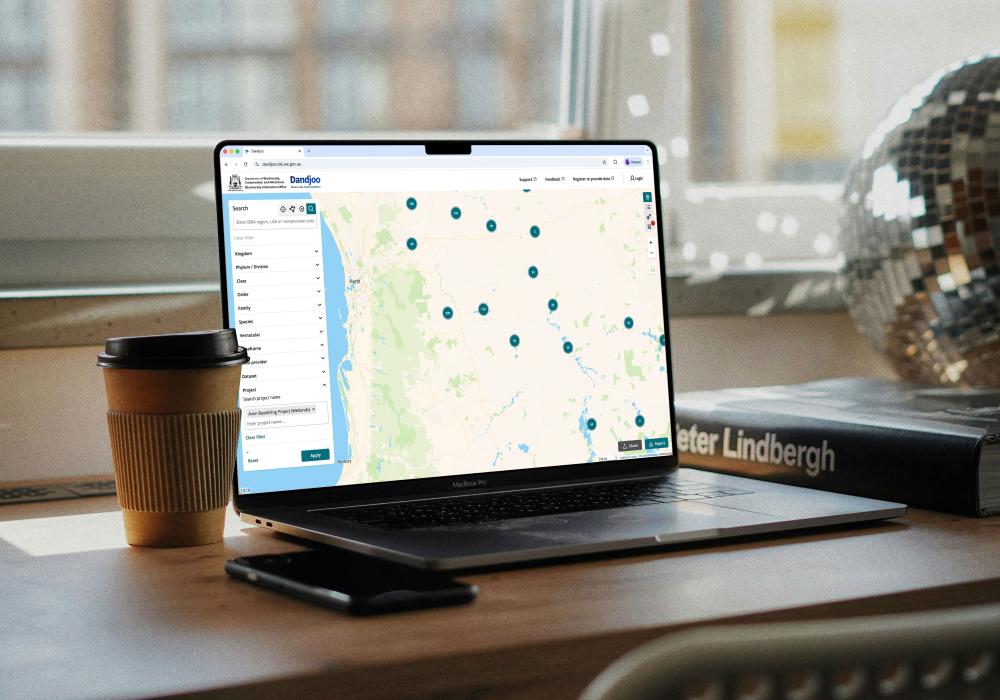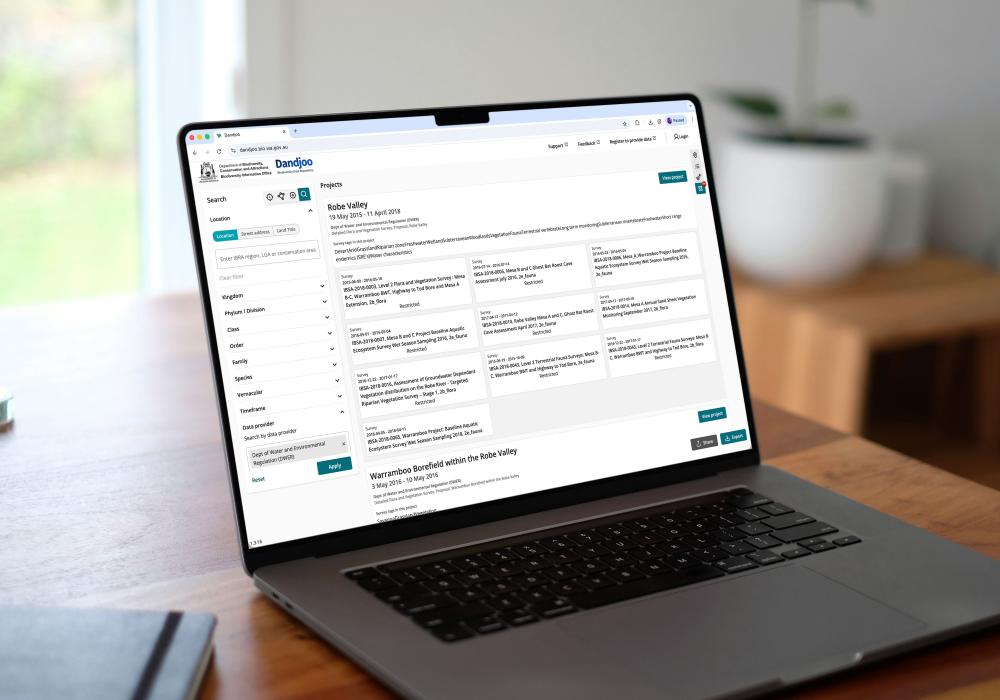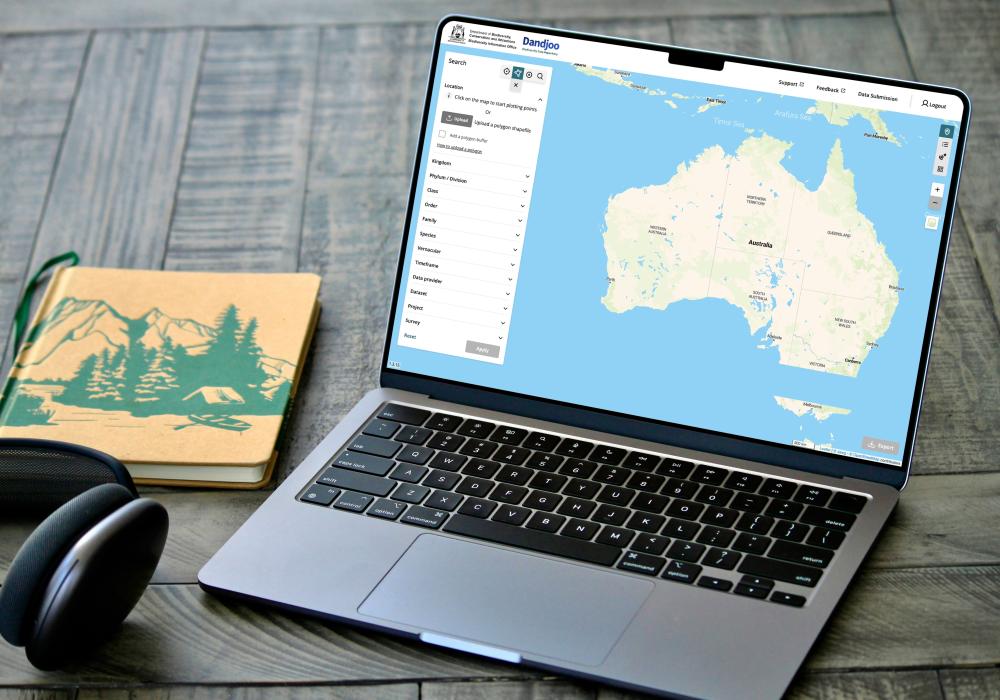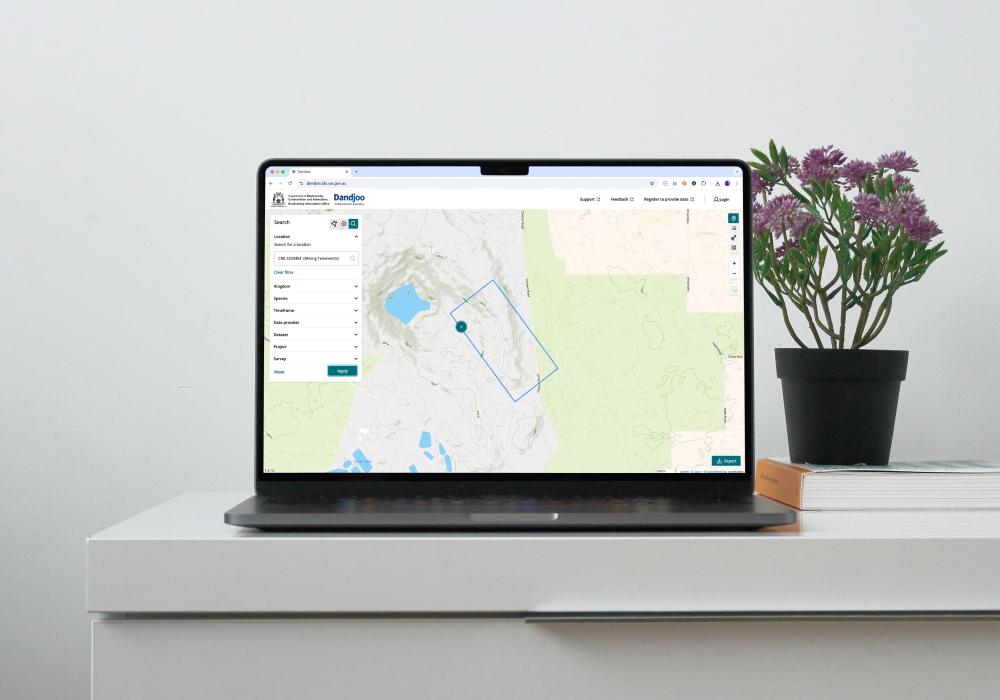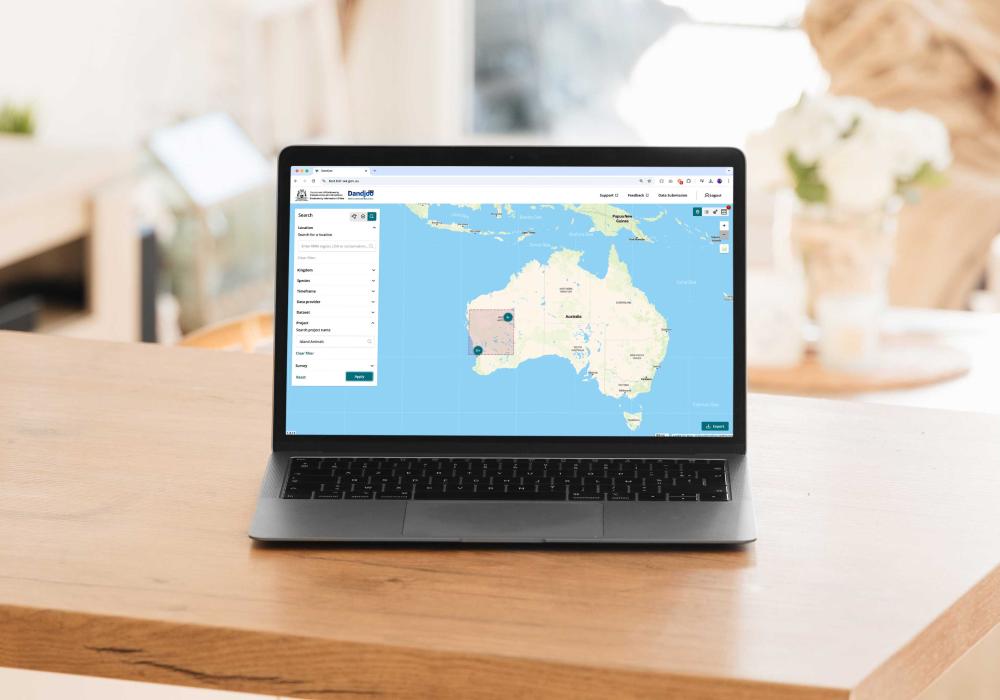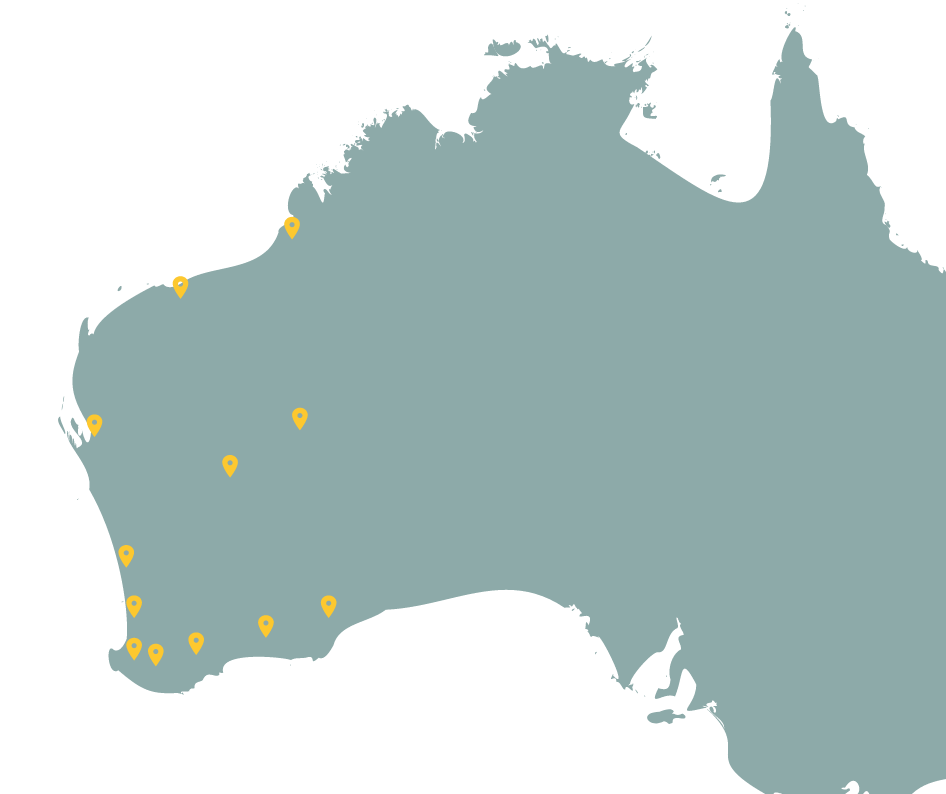For data providers, we’ve taken an approach that you shouldn’t need to use a template, provide a set number of fields, or - where possible - reformat date and location information data in your dataset to meet a prescribed format. We want to make it as easy as possible for you to submit data - if you’re providing species occurrence data, you can even use our self-service quality assurance tools to map columns in your dataset to those recognised by Dandjoo.
We’re also committed to maintaining the integrity of your data; if we have any questions about specific records in your dataset, we’ll let you know so you can decide whether you’d like us to make a correction or redact a record.
For data users our map-based interface is designed to be user-friendly and provide a familiar experience for those who have used other biodiversity data platforms. In addition, it is underpinned by a number of data quality innovations.
Data is reviewed by our team of curatorial staff prior to publication, and mapped to 54 key fields from multiple internationally ratified data standards. Dandjoo makes use of the Darwin Core, Dublin Core and Australian Biodiversity Information Standards. Dandjoo also retains all the original data fields submitted by the data provider, so we can extend those mappings as they are added in the future.
The platform also contains a number of data sets that have never been released before, including data from the private sector, and the data undergoes routine curation to ensure that taxonomic name and conservation code information is kept up-to-date.
